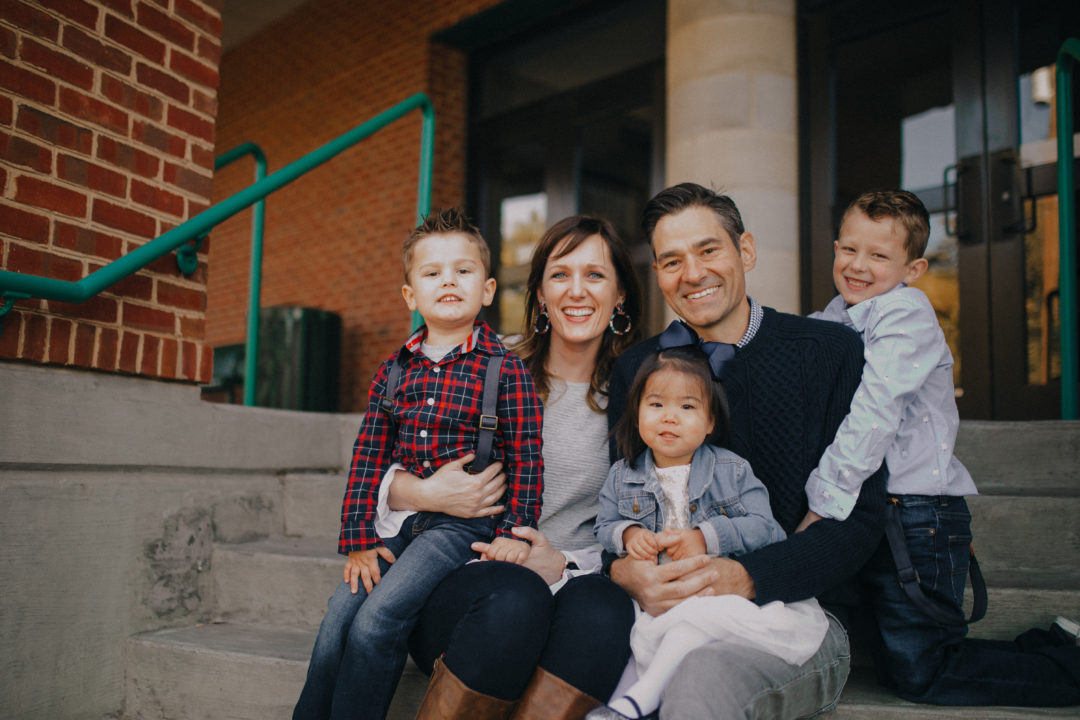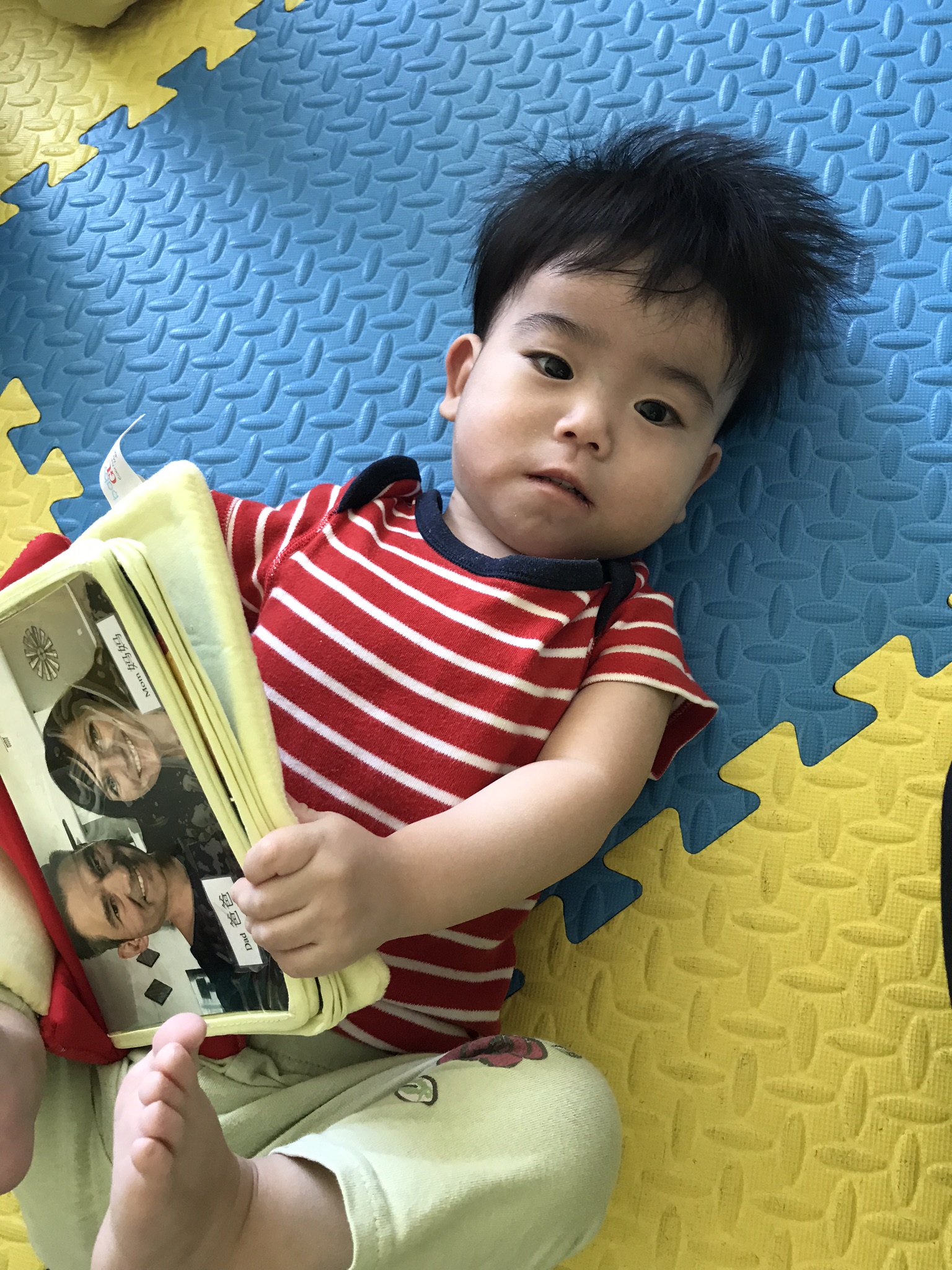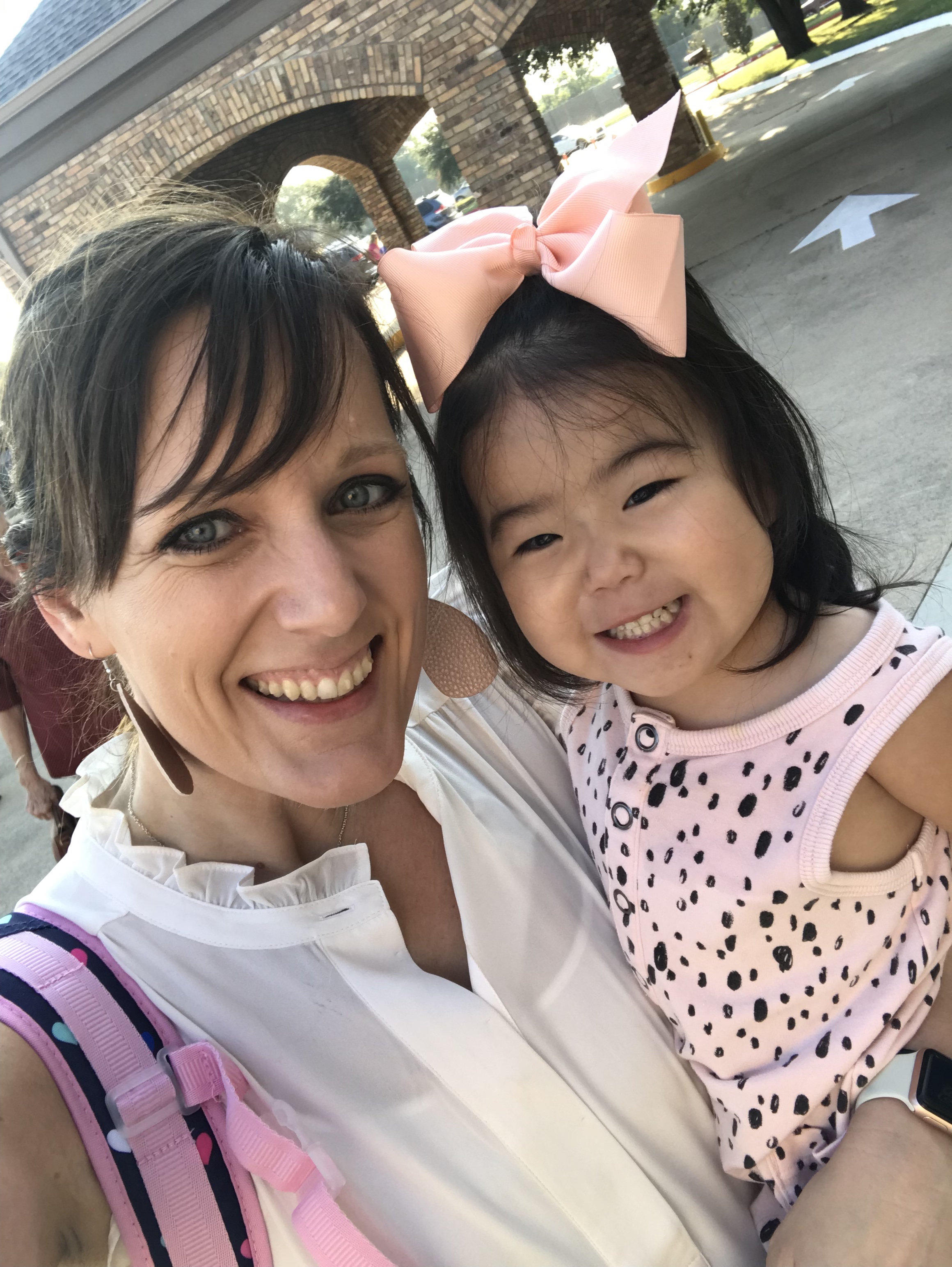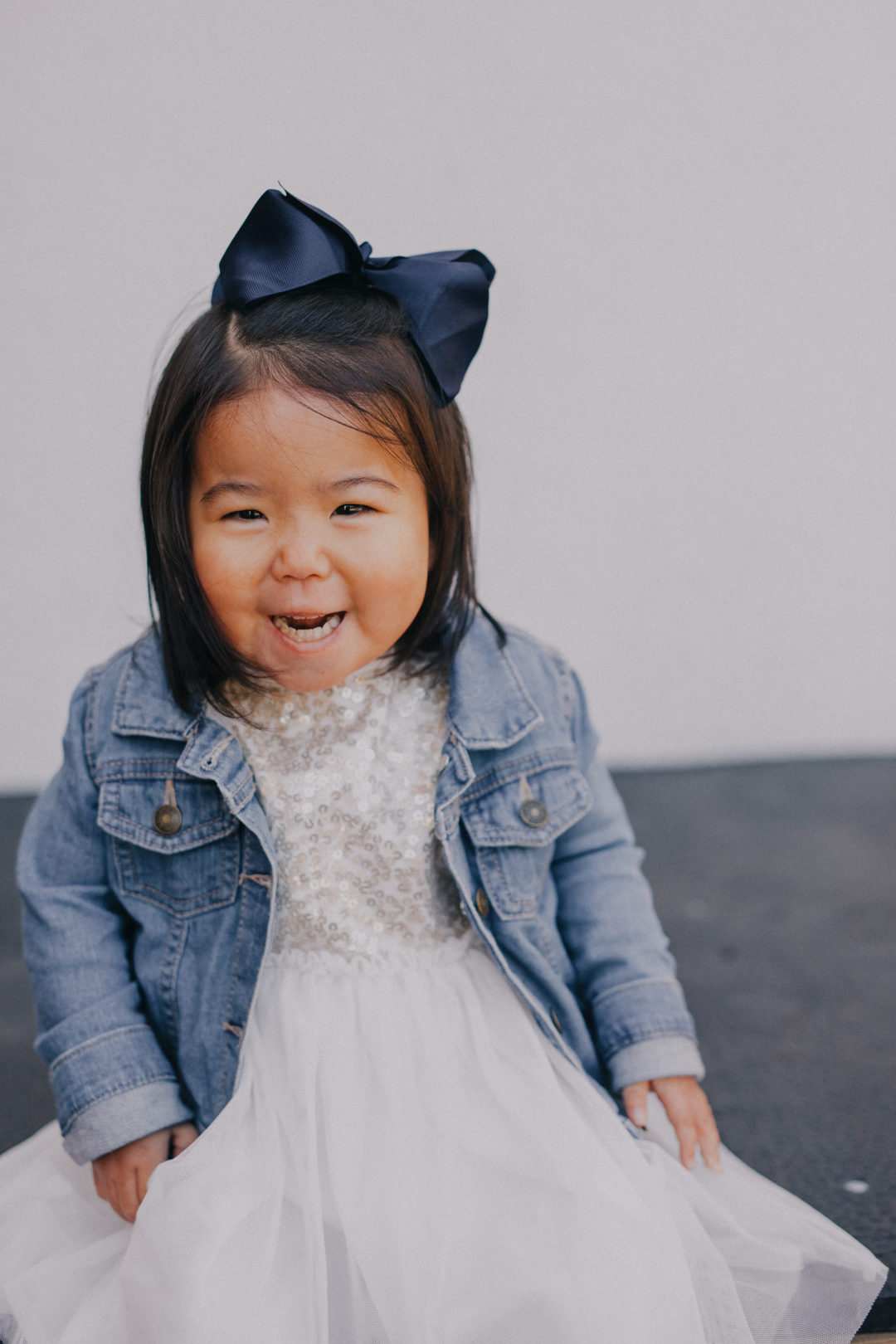As you begin your adoption journey, one small step beyond your comfort zone may be all that stands between you and your future child. But openness in adoption looks different for every family.
So, you want to adopt! After months, or maybe years, of deliberation and prayers, you’re ready to move forward. Maybe you’re still at the very beginning of your journey, researching agencies and reading every adoption blog post you can find on the internet. Or maybe you already have an agency and are eagerly awaiting the next step. Either way, your life is about to change forever.
As you probably already found out, the adoption process brings with it some big decisions. Many of these decisions challenge you to be more “open.” You learn that boys wait longer than girls. That the children most in need of families are older, or have more involved special needs.
Before you know it, the picture in your head of the child who would be joining your family looks different. Maybe you feel ready to welcome a child who is different than you originally thought. Or, like a lot of adoptive parents, you may feel a bit overwhelmed and unsure.
On paper, everything from age and special needs to eligibility requirements for different country programs can significantly change what you thought it would look like to adopt. But we’re here to tell you that the adoption process — and your future son or daughter — might not be so different from what and who you initially imagined. Flexibility doesn’t mean a 180-degree turn. Sometimes, all “being open” means is a small, single step beyond where you are now. And taking this small step might be what brings you to the child you’ve dreamed of parenting. And most importantly, to the child who needs you.
That’s exactly what happened for the Etsebeth family.
Openness to Special Needs
“My heart leapt,” says Hannah Etsebeth, describing the first time she laid eyes on her daughter’s photo. Anya, with her beautiful dark eyes and ponytail on top of her head, caught Hannah’s attention. And for some reason, her image stayed in Hannah’s memory.
From the time she was 19 years old, Hannah felt that God was calling her to adopt a little girl from China. Her husband, Johan, grew up in South Africa and spent the early part of his career advocating for children in orphanages in places like Rwanda, Thailand and India. This experience opened his eyes and heart to children around the world who needed families.
So when Hannah and Johan got married, they already knew adoption would be a part of their family’s story. They had two biological children, and then began to discuss the timing of their adoption. In the beginning stages of their adoption process, they learned a lot about the profiles of children who most needed families. They learned that almost every child who needs a family has some sort of special need — whether that’s a medical or developmental need, or being older in age.
They decided to go into the adoption process with a mindset of openness.
“We wanted to stay open-minded,” Hannah says, “and open-hearted.”
A Child Is More Than a Checklist
One of the first tasks in the adoption process is for families to go through a checklist of special needs, noting which needs they are open to, and which they don’t feel equipped to meet. While your social worker will also take time to get to know you in person, this list helps them understand the profile of child you feel most comfortable parenting. And while this is a critical and necessary step in the adoption process, going through the list of special needs you’re open to — and not open to — can itself feel uncomfortable.
“It’s really hard and awkward,” says Johan, “to view a child as a checklist.” But when it was time for Johan and Hannah to fill out this part of the paperwork, they did so the best they could.
And it wasn’t long before they learned about Anya.
At the time, Anya had an unrepaired heart condition, as well as developmental delays. The Etsebeths, captured by this sweet little girl across the world, began to consider what it would look like to become her parents.
“With her heart condition,” Hannah says, “we were definitely aware that her needs were a bit more significant than we had originally thought we could care for.”
This is a huge turning-point decision for every adoptive family — the moment when the needs you noted on a special needs checklist manifest into the description of an actual child who might join your family. It’s the moment all the hypotheticals suddenly turn into a name and a face.
“When considering the profile of child a family would like to adopt,” says Celeste Snodgrass, Holt’s director of clinical services, “families need to be very honest with themselves about the conditions they are open to considering.” While Holt strives to find a family for every child with special needs, it’s so important — for both the sake of the child and the family — that a family doesn’t pursue a profile of child whose needs they cannot meet. Being open doesn’t mean stretching beyond what you can realistically handle.
Beth Smith, Holt’s director of services for the China region, affirms this. She says that families shouldn’t feel bad if they review a child’s file, and decide not to move forward.
“We’re not going to judge,” Beth says. “We don’t put you on the ‘naughty’ list! Now we just know you better and will keep working to identify a child whose needs you feel comfortable meeting.”
For Johan and Hannah, they wondered if an involved heart condition was more than they could manage.
“If you’re open to a child,” Johan says, “I think you’ll feel that your heart opens to a certain child as a whole being.” And although her special needs were daunting, Johan and Hannah felt their hearts opening to this special little girl.
Not long after Hannah and Johan first received information about Anya, Beth called to tell them that Anya’s heart condition was repaired in China. Without an active heart condition, Anya officially fit the profile of child the Etsebeths had initially identified as being open to.
But while Anya’s heart condition had been repaired, she had other special needs — developmental special needs. Although they were open to developmental delays, as they learned more, it became clear that Anya’s delays were more significant than they had imagined.
“We loved her before we even held her, but even still, I kept thinking ‘I’m not a ‘special needs mom,’” Hannah says. “Those moms wear capes and fly around saving the world. I’m not that!” In the beginning, Hannah had doubts and insecurities about whether or not she could be the type of parent that Anya was going to need.
“She was really delayed,” Hannah says of Anya when she was a year old and living in China. “She had been in a silent environment, she didn’t have core strength, she hadn’t taken a bite of food. It was a lot more than we ever anticipated.”
Beth says delays like these can be common among children coming home from China.
“China has some wonderful orphanages and good caregivers,” she says. But no matter how well an orphanage cares for a child, an institution is never a good-enough replacement for the love and nurturing that only a family can give.
“In orphanages, the focus might be on the child’s medical condition and making sure all their primary needs are met,” Beth says. “The basic things.” But as is often the case in orphanages, especially large ones, children just don’t get the stimulation and connection with a caregiver that they need for typical development. As was the case with Anya.
But once again, Hannah and Johan felt their hearts drawn toward this beautiful 1-year-old girl with a repaired heart and developmental delays. So they decided to be open to learning more about her, and exploring what it would be like to be her parents.
Openness to Learning
“One of the best ways for families to be open as they begin an adoption process,” Celeste says, “is to be open to education surrounding international adoption and parenting a child who has special needs or has had some difficult experiences.”
Whether it’s a heart condition or cerebral palsy or developmental delays or a history of trauma, education is key. Before a family accepts a child referral, Holt recommends they consult a pediatrician or specialists to help explain medical terms and conditions mentioned in their child’s medical file, and so they can ask questions and learn about the types of medical care or therapies their child may need upon coming home. Many families also benefit from joining adoption- or special needs-specific support groups in their community or even online or through social media. These support groups can help you answer questions and prepare for the knowns and unknowns of your child’s needs — both before and after they come home.
For the Etsebeths, this meant identifying community resources and healthcare that Anya would likely need if she joined their family in Fort Worth, Texas. They talked with friends and family and prayed over their decision to move forward. And through this process, they felt more and more confident and at peace with the notion of parenting a child with more involved developmental delays than they initially felt like they could manage.

“Anya became more than a list of information,” Johan says. “A child is more than a list of information or a checklist.”
An Open Heart
One morning, Hannah finally felt like she got the confirmation she needed.
The night prior, they were looking up the meaning of Anya’s Chinese name, and found that it meant “wisdom.” And as Hannah was reading her Bible the next morning, from Proverbs 3, she came across a verse that says, “Joyful is the person who finds wisdom … for wisdom is more precious than rubies, nothing you desire can compare with her.”
“I just knew God’s hand was on Anya. I knew she was to be our daughter,” Hannah says. “It wasn’t an immediate confidence in myself, but I had a knowing in my spirit.”
Knowing they had the resources to care for Anya, with a deep confirmation in their hearts that she was to become their daughter, Hannah and Johan stepped out bravely — with openness to what lay before them in becoming her parents.

“I think special needs are always scary to anybody and we need to be realistic in what we feel we can handle,” says Johan. “At the same time, I don’t feel like parents plan to parent a child with special needs any more than a child chooses to have special needs. At a certain point, it becomes less about choosing a child and more about choosing to be the type of parent who is willing and determined to walk through anything with your child.”
Johan and Hannah say they are honored to navigate special needs as a family with Anya.
Openness to Country Program, Age & Multiples
While being open to special needs is one of the biggest ways for families to be open, it isn’t the only way. For Bre and Drew Traver, openness in regard to country program, age and sibling sets led them to their two sons.
“Originally,” says Bre, “we were thinking that we wanted to try and adopt a baby.”
Bre and her husband, Drew, always knew that adoption would be their path to parenthood, and when they decided it was time to build their family, they initially felt drawn to adopting a child in the U.S. foster care system.
But after several classes and trainings for Holt’s foster care and adoption program, they ultimately decided it wasn’t the right fit. Changing directions, they began to pursue international adoption.
And in choosing international adoption, they wanted to go into it with an open mind.
“We didn’t necessarily have a specific image of a child or children in mind,” says Drew. “We just knew we wanted to provide a safe and loving home for kids.”
Based on eligibility and timeframe and the needs of children who were waiting, they felt that Holt’s China program was the best fit for their family. They applied, and were accepted.
But as they sat in their home, completing their first adoption homestudy visit with their social worker, she mentioned to them that Holt just opened an adoption program in Colombia.
“We were immediately interested,” says Bre. “We live in an area where Spanish is commonly spoken, and we knew we had a great opportunity to make a child — or children — from Latin America feel more at home.”
So they transferred from the China program to Holt’s Colombia program. And it wasn’t long before they were matched with 7 and 4-year-old brothers William and Jeison. For several years, William and Jeison had lived in an orphanage where they were well taken care of. They never lacked for food, clothing, medical care — even educational and emotional support. But they lacked the most important thing, the love and care of a family.
And now that they’re home, they are learning how to live in a family — not a care center. In the care center, William and Jeison were two children among dozens in the same living environment. So being part of a nuclear family of four has been a big adjustment.
“At this point,” Bre says, “they’re working to fully understand a consistent family structure, ample one-on-one time with adults, and the idea of having their own space and their own things.” But as they navigate and adjust to everything that is new, William and Jeison have their parents to love and support them every step of the way.
On paper, the difference between adopting an infant from the U.S., and two older boys from Colombia, seems drastic. But for the Travers, it was a series of natural-feeling decisions, made over time as they moved forward in the adoption process one step at a time.
“For us, openness meant several things,” Drew says. “It meant considering referrals for children outside of the age range we had imagined and it meant considering adopting more than one child. Openness also meant exploring and digging into the special needs checklist and being real with ourselves.”
Openness to Birth Family
Another way that families need to be realistic and honest throughout the adoption process is on the topic of birth family.
For some families considering adoption, birth family involvement may be one of the deciding factors between international or domestic adoption. While every child’s situation is unique, domestic adoption has a much higher likelihood of a child maintaining a connection with his or her birth family. And some families feel more comfortable than others with the idea of ongoing contact between their child and their child’s birth family.
When adopting through Holt’s domestic infant adoption program in Illinois and Wisconsin or our domestic foster care and adoption programs in Oregon and Washington, in nearly all instances, families need to be open to some sort of contact with their child’s birth family. While this adds an additional layer of complexity, study after study has shown that an arrangement in which the adoptee knows their history and maintains a safe and appropriate relationship with their birth family ultimately benefits everyone involved. Most importantly, it benefits the adoptee as they grow up and explore their identity.
“It’s important for an adopted child to know that their past, including their birth family, is something they can ask questions about and freely discuss with their adoptive family,” says Celeste. “This helps lay a foundation for health identity development and processing the story of their life as they grow into adulthood.”
For families pursuing international adoption, who often have limited or no information about their child’s birth family, they sometimes assume that birth family won’t be a factor. But as families in any adoption process soon learn, a child’s birth family will always in some way be a part of their lives — whether they are known or unknown, in a neighboring state or across the world. And this, too, is so important to be open to.
“A huge part of adopting, especially an older child,” says Celeste, “is respecting their past experiences and the important people in their life — whether it’s friends from their orphanage, foster parents or birth parents.”
For the Swartz family, openness to birth family meant a little bit of everything and looked different for each of their seven adopted children — whose birth countries include China, Korea, Ethiopia, Vietnam and South Sudan.

“Each child has an important history that is special and unique,” Danna Swartz says of her children. “Adoptive families must be open to all the pieces that come with an adopted child.”
They’ve learned that there’s a wide range in what it can look like to be connected to a child’s birth family. And that this oftentimes depends on the child’s birth country and all the different factors that led to their adoption.
In age-appropriate ways — and within the safety of their family — Danna and her husband, Patrick, have stood committed to helping each of their children navigate their birth family connections.
Just last July, Danna and Patrick and five of their children traveled to Ethiopia to meet the birth families of their 17-year-old son, Daniel, and 13-year-old daughter, Lydia.
“The experience was life-changing for us and extremely positive,” Danna says. “Their birth families have become part of our extended family.”
They also traveled to China to help their daughter Hannah learn more about her past. Although Hannah wasn’t able to connect with her birth family in China, she visited her former orphanage and met her caregivers, who told her stories about her early years. They even visited the place where she was initially found, and learned everything they could about the people and the region. Even though she wasn’t able to find her birth family, she was still able to fill in important parts of her story that used to be unknown.
Danna and Patrick follow their children’s lead when it comes to birth family. Sometimes this means traveling across the world, and other times, it means researching their culture from afar and being open to conversations about the wonderings and unknowns of their past.
“Each of my children has had varying degrees of interest in their adoption story and their birth family, and we have shared with them as appropriate as they have asked,” Danna says. “It’s important that children know their adoptive parents are secure in their role as parents and that they don’t feel threatened by inquiries into the past.”
As you decide on the right adoption path for you and your family, openness to birth family involvement may or may not be a topic you have considered. If you do pursue domestic adoption, how much and in what ways your child’s birth family will be in your child’s life will be a decision you make together with your child’s birth family. And if you adopt internationally, birth family involvement may or may not resemble the Swartz family’s experience. But just like all the other steps of openness you can take, openness to talking about and recognizing the importance of your child’s birth family is a critical step in adoption — and one that will, in the end, benefit both your family and your child.
How Openness Leads You to Your Child
Today, Hannah and Johan still don’t wear capes — like those “parents of children with special needs” that Hannah had long admired. But they’ve been the perfect match for Anya — and she for them.
“She’s a little champion,” Hannah says. “She’s the most courageous child.” In the year since Anya joined their family, she has transformed with their love and care.
“Sitting there in China,” Hannah says, “I thought, ‘Is she ever going to walk, is she ever going to talk?’ But she was given a chance to thrive.”
This fall, Anya began attending preschool. She’s walking. She talks. She loves music and playing pattycake. Now that she has the love, support and care of a family, Anya is catching up quickly in her development, and the concerns they had in the beginning seem to be a thing of the distant past.
In the Traver household, William and Jeison are also thriving.
“Of course, we are still adjusting and learning about one another,” Bre says. “But we are so lucky to get to be their parents. We are thankful every day that we were willing and open enough to change directions in our process. Today, our family makeup is very different than we initially imagined, but it ended up being exactly what we needed.”
Neither the Etsebeths nor the Travers would have been matched with their children had they not been open throughout the adoption process. And for the Swartz Family, being open has enriched and grown their family in ways they never expected. Openness doesn’t have to be drastic — and it never means pursuing a program or profile of child that you’re not comfortable with. But it’s allowing yourself to change and be changed throughout the adoption process as you learn more about yourself and about the children who are waiting.
“It’s a beautiful story that you can allow yourself to be a part of,” Johan says. “I think anybody who loves a child… it’s just so much bigger. It’s one of the most amazing things that we can be open to as human beings.”
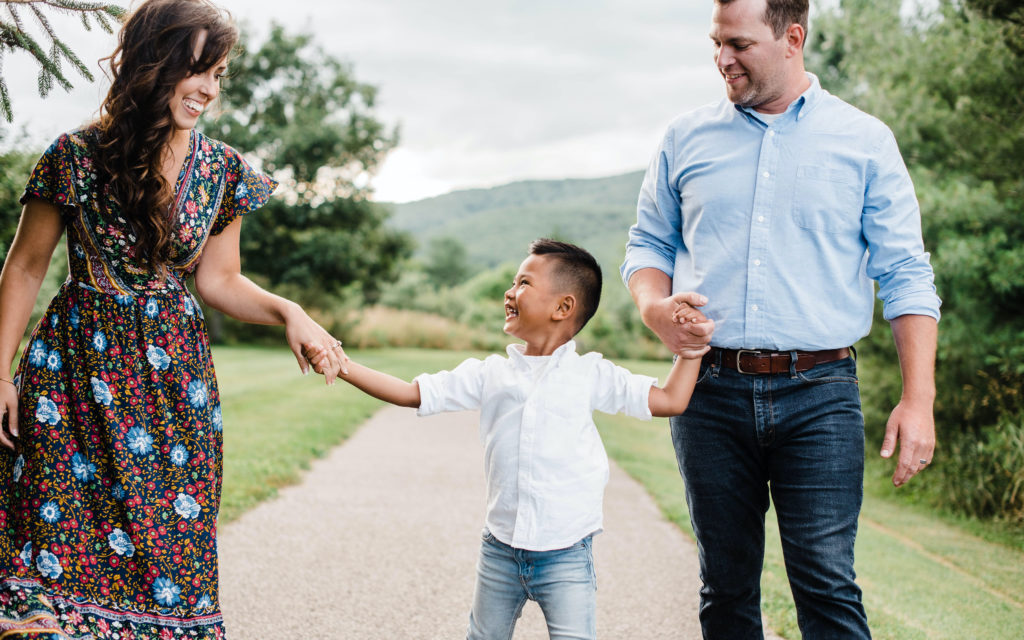
Learn More About International Adoption
We work with families in all 50 states to find loving homes for children from 11 locations around the world!
